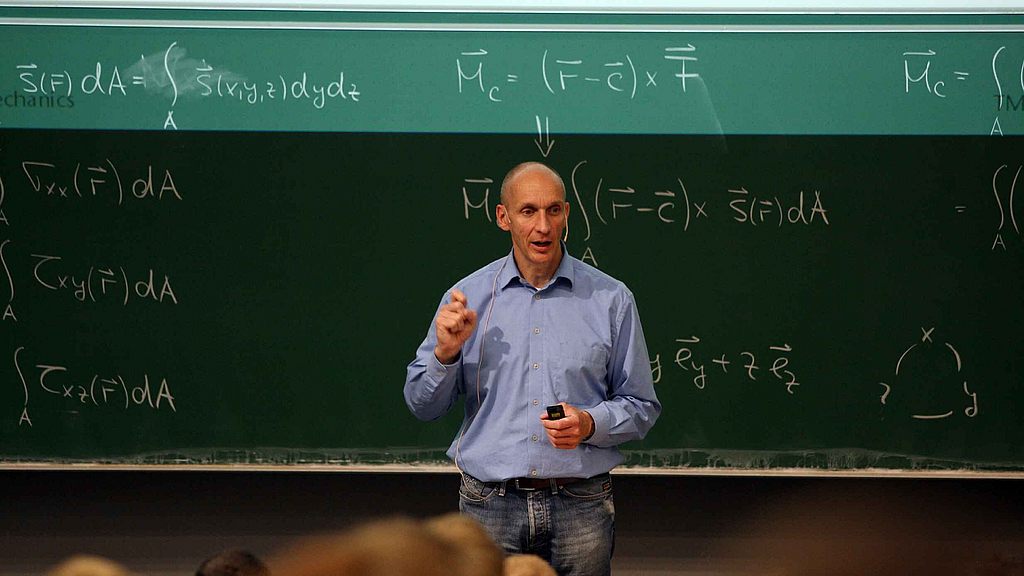Continuum Mechanics
The treatment of flow, deformation of solids, or flow of electric currents is based on the formulation of field equations (equations that depend on the spatial variable and time). In order to understand lectures in following courses, or, which is much more important, to follow the content in theory manuals of finite element or finite volume programs in numerical solution methods, it is necessary to have a basic background. In this lecture, the necessary mathematical foundations is provided and applied to examples of mechanics (for example, stress and strain tensors, gradients and so on).
In Engineering Mechanics II (elastostatics) we restrict ourselves to geometrical and physically linear problems, i.e. both the kinematics of the deformation and the relationship between stresses and strains are linear relationships. From applications in metal forming processes, the loading conditions of elastomeric bearings, as examples in solid mechanics, and from the description of flows in fluid dynamics we know that arbitrary large deformations and motions may occur. The aim of this course is the general description of the kinematics and the associated repetition of the basic balance equations such as balance of mass, momentum, angular momentum, energy and entropy. The aim of this course is to provide upcoming engineers to obtain the basic theoretical background which is required to understand theory manuals of finite element or finite volume methods. Additionally, it becomes obvious that solid mechanics and fluid mechanics are based on the same basis and do not represent two completely independent theories.
Periods per week | 3 lectures + 1 exercises |
Final exam | Homework and oral exam |
Content | Tensor algebra General description of the motion |
